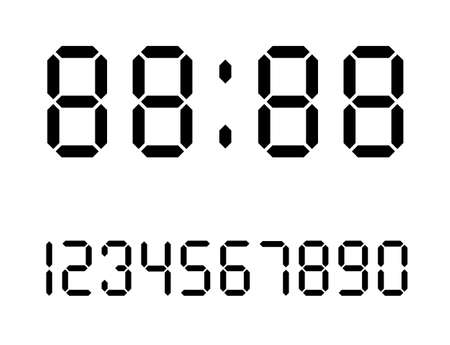Introduction to Palmistry in American Culture
Palmistry, also known as chiromancy or palm reading, has fascinated people around the world for centuries. In the United States, this ancient art has been woven into the fabric of popular culture, often appearing in movies, TV shows, and at local fairs. But how exactly has palmistry adapted to American beliefs and attitudes? And what makes it so appealing in a country known for its blend of skepticism and curiosity?
The Roots of Palmistry
Palmistry traces its origins back to ancient India, China, and Egypt, but it truly became popular in Europe during the 19th century before making its way to America. Once here, it quickly found a place among fortune tellers, spiritualists, and even everyday folks curious about what their hands might reveal about their lives.
Palm Reading: An American Perspective
In the U.S., palmistry is less about strict tradition and more about personal insight and entertainment. For some, its a fun activity at carnivals or parties; for others, it offers genuine guidance or self-reflection. American palmists often blend classic interpretations with modern psychology and pop culture references. The focus is usually on personal empowerment—understanding your strengths, challenges, and potential life paths.
American Attitudes Toward Palmistry
| Attitude | Description |
|---|---|
| Skeptical Curiosity | Many Americans approach palmistry with an open mind but maintain a healthy dose of skepticism. |
| Entertainment Value | Palm readings are popular as light-hearted entertainment at social gatherings and festivals. |
| Personal Growth | Some use palmistry as a tool for self-discovery or to spark conversations about personality traits and life choices. |
| Pop Culture Influence | Palmistry appears regularly in American media, shaping perceptions and keeping the practice relevant. |
Palmistry’s Place in Everyday Life
Today, you can find palm readers across the U.S.—from small-town fairs to big city metaphysical shops. Whether people believe fully in its predictions or just enjoy the novelty, palmistry remains a unique part of American culture. Symbols like crosses, triangles, and stars on the palm have taken on meanings that mix traditional interpretations with distinctly American ideas about fate, luck, and personal destiny.
2. Understanding Palm Symbols: Crosses, Triangles, and Stars
When it comes to palmistry in the United States, certain symbols stand out for their unique meanings and cultural interpretations. Among these, crosses, triangles, and stars are some of the most talked-about shapes you’ll find on the palm. Each symbol can appear in different spots and carry its own significance, especially when considered through an American lens where personal growth, independence, and success are often emphasized.
Crosses: Turning Points and Challenges
A cross on the palm is usually seen as a marker of significant events or decisions. In American palmistry circles, a cross might represent a major turning point—a challenge that requires resilience or a situation where your values are tested. Its meaning can shift depending on where it appears:
| Location | Typical Meaning (U.S. Context) |
|---|---|
| On the Heart Line | Emotional crossroads; important relationship decisions |
| On the Head Line | Mental challenges or breakthroughs in thinking |
| Near the Life Line | Pivotal life events or changes in direction |
Triangles: Growth and Opportunity
Triangles tend to be viewed positively in American readings. They’re often linked with opportunities for self-improvement or periods of protection and luck. If you spot a triangle on your palm, think about areas of life where you might be experiencing growth or facing new opportunities:
| Location | Typical Meaning (U.S. Context) |
|---|---|
| Under the Index Finger (Jupiter Mount) | Ambition and leadership potential |
| Near the Mercury Mount (pinky side) | Cleverness and communication skills |
| At the Base of the Palm | Strong foundation or support system |
Stars: Success and Sudden Change
The star symbol is rare but powerful. In America’s goal-oriented culture, stars are frequently read as signs of sudden breakthroughs, moments of recognition, or bursts of luck—think getting a big promotion or achieving something unexpected. Where a star lands gives extra context:
| Location | Typical Meaning (U.S. Context) |
|---|---|
| Mount of Apollo (beneath ring finger) | Certain success or creative achievement |
| Mount of Venus (thumb base) | Burst of passion or new relationships |
| Palm Center | Dramatic shift or life-changing event |
The American Perspective: Personal Empowerment Through Symbols
Palmistry in the U.S. often connects these symbols back to ideas like self-discovery, overcoming obstacles, and seizing opportunity—values that run deep in American culture. Whether you see a cross signaling a tough decision ahead, a triangle promising personal growth, or a star hinting at a big win, each mark encourages you to reflect on your path and make choices that align with your goals.

3. Crosses: Interpretations and Meanings in the U.S.
When it comes to palmistry in the United States, crosses are one of the most talked-about symbols found on the palm. These tiny “X” marks can appear anywhere on your hand, and their meanings can shift based on their location, size, and even the cultural lens through which theyre viewed. While traditional palmistry has its roots in ancient India and China, Americans have put their own spin on interpreting these mysterious crosses. Lets break down what these symbols mean in American palm reading culture.
What Do Crosses Represent?
Generally, a cross in palmistry is believed to represent an intersection of energies—sometimes good, sometimes challenging. In the U.S., readers often see them as signs of important life events or crossroads that could shape a persons journey. They might indicate challenges, spiritual turning points, or areas where fate intervenes.
Cross Locations and Their Meanings
| Location on Palm | American Interpretation |
|---|---|
| Under the Index Finger (Jupiter Mount) | Ambition, potential for leadership, or struggles with authority; sometimes linked to big opportunities or setbacks in career. |
| Under the Middle Finger (Saturn Mount) | Life lessons, personal discipline challenges, or karmic tests; often seen as warnings about repeating mistakes. |
| Under the Ring Finger (Apollo Mount) | Creativity blocks or breakthroughs; a sign of fame or public recognition but also possible envy or rivalry. |
| On the Heart Line | Emotional crossroads; significant romantic events like heartbreaks or new love beginnings. |
| On the Head Line | Mental stress points; decisions that changed ones worldview or education paths. |
| On the Life Line | Major life events such as moves, health scares, or changes in family dynamics. |
Unique American Perspectives on Crosses
Many American palmists blend traditional interpretations with local beliefs. For example, a cross near the base of the thumb (the Venus Mount) is sometimes read as representing family blessings or hardships—a nod to Americas emphasis on family values. In modern American readings, crosses may also be seen as markers of resilience: proof that someone has overcome adversity or stood at a critical juncture and made it through.
Cultural Influences on Meaning
The U.S. is a melting pot of cultures, so interpretations of crosses can also reflect this diversity. Some readers incorporate Christian symbolism—seeing a cross as divine protection or guidance—while others focus more on psychological growth and personal development. This flexible approach makes American palmistry unique compared to more rigid systems elsewhere.
4. Triangles: Insights and American Perspectives
Understanding Triangles in Palmistry
In palmistry, triangles are one of the most intriguing markings you can find on a hand. These small, three-sided shapes can appear anywhere among the lines or mounts of the palm. Traditionally, triangles are thought to symbolize special talents, protection, or moments of clarity in a person’s life path. Their presence is often interpreted as a positive sign, but their exact meaning depends on where they show up.
Common Locations and Meanings
| Location on Palm | Typical Interpretation |
|---|---|
| On the Mount of Jupiter (beneath the index finger) | Leadership ability, ambition, and a drive for success |
| On the Mount of Apollo (beneath the ring finger) | Creativity, artistic talent, and recognition by others |
| Near the Life Line | Protection during challenging times or from health issues |
| Intersecting Major Lines (Heart, Head, Life) | Moments of insight or turning points in personal development |
American Interpretations and Cultural Nuances
The United States has its own unique take on palmistry symbols like triangles. While traditional interpretations are respected, many American palmists emphasize personal growth and individuality. Triangles might be seen not just as signs of destiny but as indicators of a person’s ability to seize opportunities or overcome obstacles through determination.
You might hear American readers talk about “hidden strengths” or “breakthrough moments” when discussing triangles on the palm. There’s also a trend toward seeing these symbols as encouragements for self-improvement rather than fixed predictions about one’s future.
Regional and Subcultural Variations
Palmistry in the U.S. isn’t exactly one-size-fits-all. In different regions or subcultures, the triangle’s meaning can shift:
| Region/Subculture | Interpretation Emphasis |
|---|---|
| West Coast (California, Pacific Northwest) | Personal empowerment, spiritual awakening, creative breakthroughs |
| The South (Texas, Georgia, etc.) | Family legacy, resilience through adversity, community support |
| Urban Centers (New York City, Chicago) | Career milestones, adaptability, networking skills |
| Youth/Alternative Communities | Breaking free from tradition, embracing change, finding your tribe |
A Simple Example: The Triangle Near Your Heart Line
If you spot a triangle near your heart line—a crease that curves under your pinky—an American palmist might say this represents a breakthrough moment in relationships or emotional understanding. It could mean learning to communicate better with loved ones or experiencing an important realization about self-worth. Unlike some traditions that might see it as fate alone at work, many Americans frame it as a sign you have what it takes to grow emotionally and connect with others in meaningful ways.
5. Stars: What Do They Signify in the American Context?
Understanding Stars in Palmistry
In palmistry, stars are tiny, star-shaped markings found on different areas of the palm. Their meaning can shift depending on where they appear. While crosses and triangles often focus on challenges or skills, stars bring a unique energy that many Americans find intriguing—often tied to luck, destiny, or moments of sudden change.
The Symbolism of Stars in U.S. Palm Readings
In the United States, stars in palmistry are usually seen as symbols of:
- Sudden Opportunity: Many American palmists interpret stars as signs of unexpected good fortune or breakthroughs.
- Recognition: Especially in career lines, a star can point to public acknowledgment or fame—something celebrated in American culture.
- Transformation: Sometimes, a star means a turning point or powerful change ahead.
Common Placements and Meanings in the U.S.
| Star Location | American Interpretation |
|---|---|
| Mount of Jupiter (below index finger) | Leadership success, recognition for achievements, sudden promotion |
| Mount of Saturn (below middle finger) | Major life lesson learned quickly, sometimes an unexpected challenge with growth potential |
| Mount of Apollo (below ring finger) | Celebrity status, artistic breakthrough, creative success |
| Mount of Mercury (below pinky) | Communication win, business deal closure, lucky networking event |
| Main lines (Heart Line, Head Line, Life Line) | A dramatic change or moment that shapes ones path; interpreted positively if other lines are strong |
Stars in American Popular Culture and Media
The fascination with “stars” is not just limited to readings. In American pop culture—think Hollywood’s “stars” on the Walk of Fame—the symbol often stands for celebrity and aspiration. This cultural association sometimes colors how people view star markings during palm readings: as signs of being “destined for greatness,” “meant to shine,” or experiencing a “big break.”
A Quick Example: The Star on the Mount of Apollo
If someone finds a star on their Mount of Apollo during a reading in the U.S., it’s common for the palmist to say something like: “You have the potential for public recognition—maybe you’ll be known for your creativity or talent!” This resonates strongly with American values around individuality and achievement.
Summary Table: Key Star Symbolism in U.S. Palmistry
| Symbol | Main U.S. Meaning |
|---|---|
| Star Marking | Lucky event, personal breakthrough, public recognition, major transformation |
In short, while stars carry mystical significance worldwide, their interpretation in the U.S. often reflects themes important to American culture—success stories, sudden luck, and standing out from the crowd.
6. Palmistry as Seen Through the American Lens
The Influence of American Cultural Values
Palmistry in the United States is shaped by unique cultural values that set it apart from its practice in other parts of the world. Americans often view palm reading not just as a mystical or fortune-telling tool, but also as a way to explore personality and potential. The symbols—crosses, triangles, and stars—are often interpreted through the lens of key American ideals like self-determination, optimism, and success.
Attitudes Toward Fate and Free Will
One of the most distinct features of palmistry in America is how people see the balance between fate and free will. While some traditions might emphasize destiny written in the lines of your hand, many Americans believe in personal agency—the idea that you can shape your own future. This influences how palmists explain symbols:
| Symbol | Traditional Meaning | American Interpretation |
|---|---|---|
| Crosses | Karma, important life events | Challenges to overcome; opportunities for growth |
| Triangles | Talent, spiritual insight | Potential for achievement; signs of special skills |
| Stars | Sudden change, luck | Moments of breakthrough; highlights on the path to success |
The Role of Folklore and Pop Culture
American folklore and popular media have brought palmistry into movies, TV shows, and books, often making it seem both mysterious and accessible. For example, detective stories sometimes feature palm readers who help solve mysteries using “hidden clues” on someone’s hand. In other cases, talk shows and online platforms use palm reading as a fun way to discuss relationships or career paths. This pop culture exposure makes palmistry less about predicting doom and more about finding motivation or confirming one’s strengths.
Palmistry as Self-Discovery in American Life
For many Americans, getting their palms read is less about believing in unchangeable fate and more about gaining insight into themselves. It can be seen as a tool for self-reflection rather than strict prophecy. This reflects broader American beliefs in self-improvement and taking control of one’s destiny.
Cultural Attitudes at a Glance
| Cultural Value | Palmistry Connection | How it Shapes Symbol Meaning |
|---|---|---|
| Success & Ambition | Focus on achievement lines (e.g., triangles) | Symbols seen as markers of potential or progress |
| Personal Agency | Interpretation of changes in lines/symbols over time | Belief that actions can influence outcomes seen in the palm |
| Skepticism & Entertainment | Palmistry used in media/parties for fun or curiosity | Symbols become conversation starters more than prophecies |
7. Conclusion: The Evolving Meaning of Palm Symbols in the U.S.
In the United States, the meanings attached to crosses, triangles, and stars found in palmistry are not fixed—they keep changing as American society shifts and grows. Today, these symbols blend both traditional interpretations from centuries-old palmistry and new perspectives shaped by modern American life. For example, people may see a cross on their palm and connect it with classic ideas about challenges or turning points, but also relate it to personal stories of resilience that resonate with American values.
How Americans Interpret Palm Symbols Today
| Symbol | Traditional Meaning | Modern U.S. Interpretation |
|---|---|---|
| Crosses | Obstacles, spiritual crossroads | Personal growth, overcoming adversity, faith in second chances |
| Triangles | Talents, creativity, opportunities | Entrepreneurship, self-improvement, unlocking potential |
| Stars | Luck, fame, destiny | Pursuit of dreams, inspiration, “American Dream” symbolism |
The Impact of American Culture on Palm Readings
The way people in the U.S. view palmistry is influenced by pop culture, movies, and social media trends. Crosses can represent tough times but also bouncing back—a theme often seen in American storytelling. Triangles are linked to innovation and self-made success, echoing the spirit of Silicon Valley and creative industries. Stars remain a favorite symbol for hope and ambition, much like how Hollywood represents opportunity.
The Future of Palm Symbol Meanings in America
As America becomes more diverse and open to different belief systems, interpretations of palm symbols will likely continue to adapt. Younger generations mix old-school symbolism with personal meaning—sometimes using these signs as reminders to stay positive or as conversation starters at parties. Whether someone follows traditional palmistry or puts their own spin on it, crosses, triangles, and stars keep finding new relevance in everyday American life.


